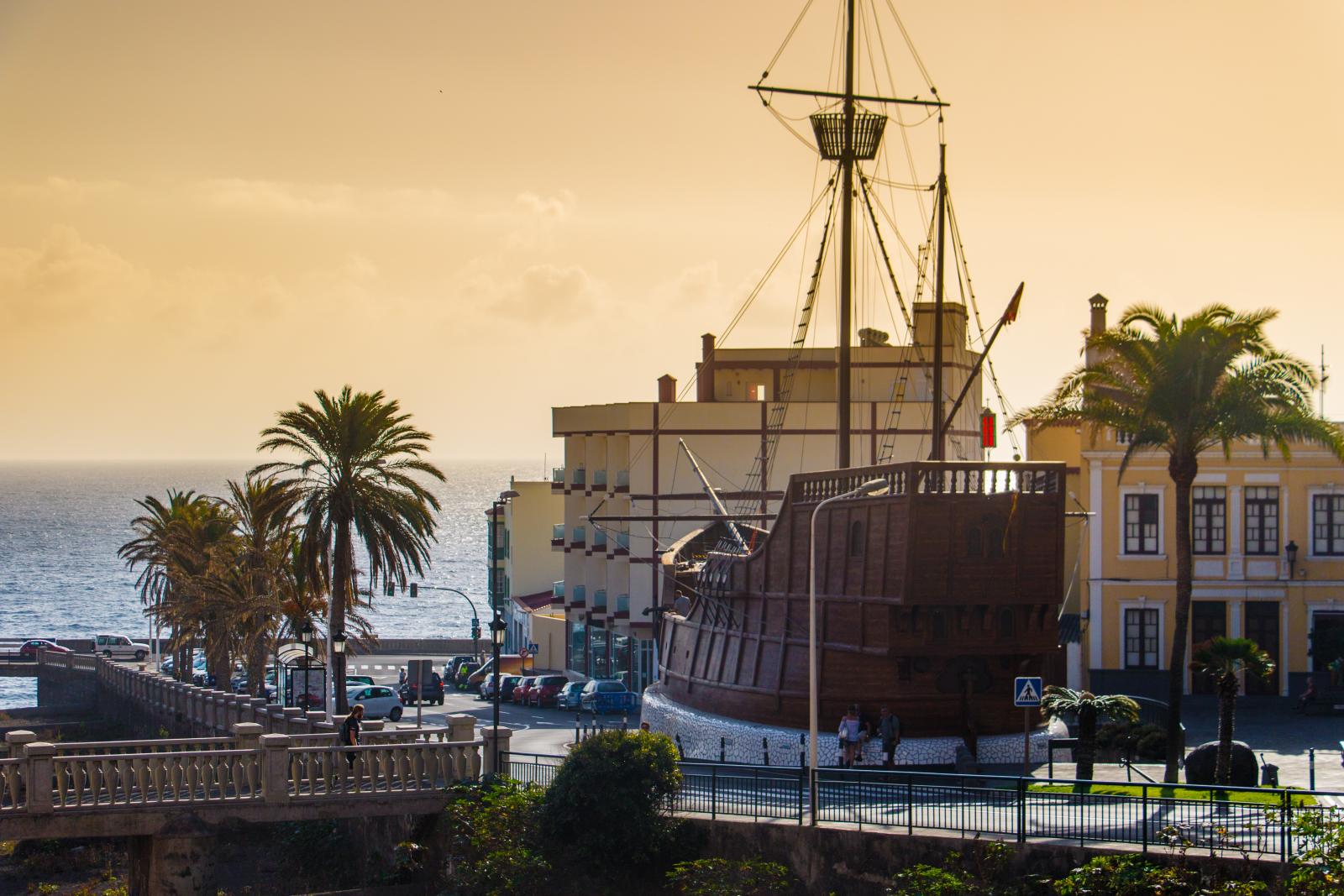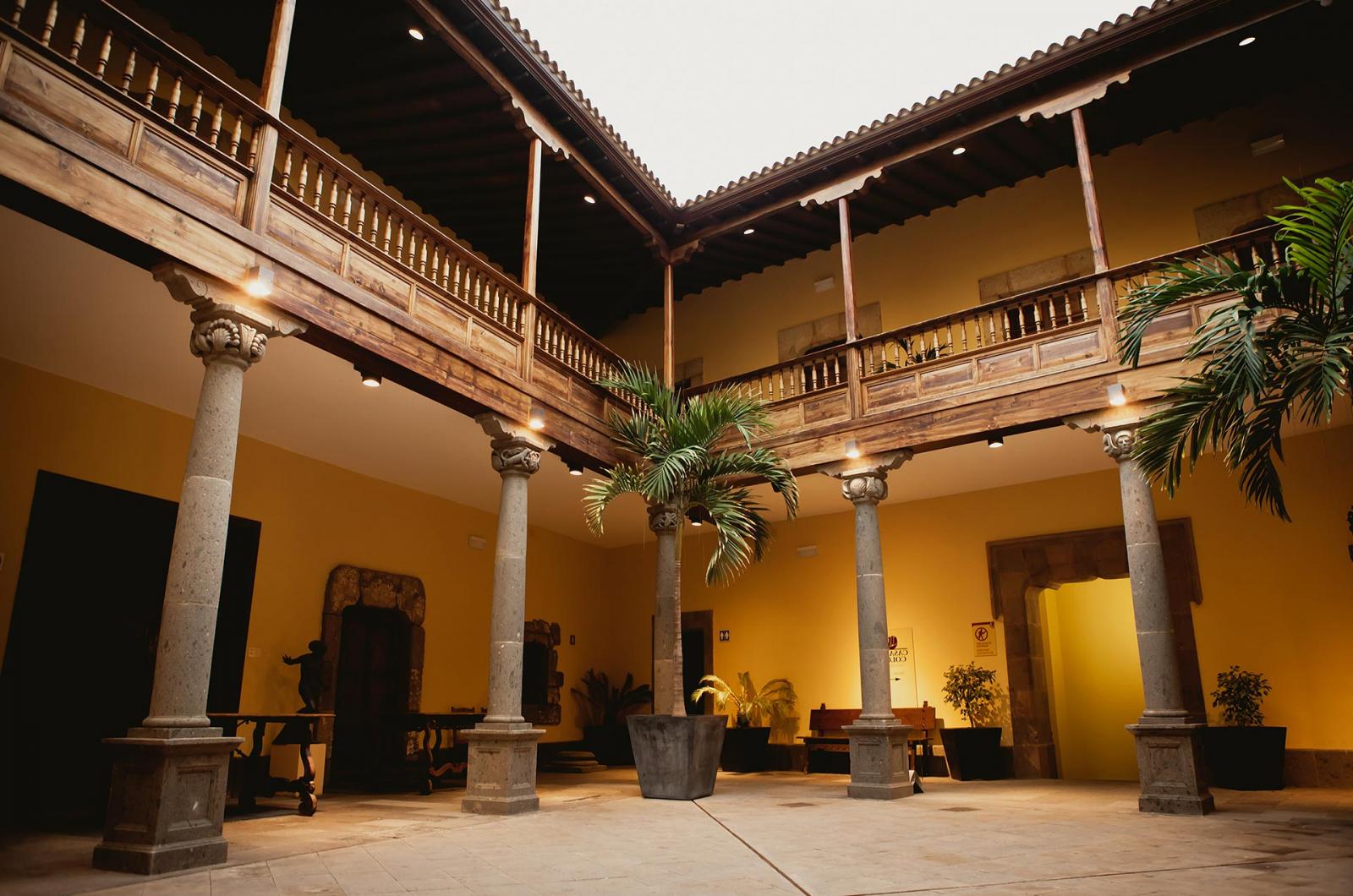The Canary Islands were of vital importance in Christopher Columbus’s voyage to the New World. In addition to being the last port in Europe that the vessels set sail from, they were a refuelling point in all senses. The natural wealth of the islands, the quality of their drinking water and the friendliness of their inhabitants meant that the expedition stayed there for several weeks as they stocked up on strength for the long voyage ahead.
Towards the New World
On 3 August 1492, the Santa María, La Pinta and La Niña ships set sail from Palos de la Frontera towards the Canary Islands, their last port of call before setting off in search of an alternative route to the Indies.
They arrived in the islands on 9 August, stopping to give their ships a final check and recruit some Canary Islands sailors known for their skills and knowledge of the waters. Christopher Columbus’s expedition finally set sail on 6 September, hoping to reach the eastern coasts of Asia.
On 12 October 1492, after a voyage of 36 days, the sailor Rodrigo de Triana called out the much-awaited “Land ahoy!” from the top of La Pinta. But it was not the continent of Asia that they stepped onto, but a new world. Christopher Columbus had changed the course of history.
The influence of the Canary Islands on America
Two circumstances turned the Canary Islands into a compulsory port of call en route to the New World: being at the centre of the trade wind currents and being Europe’s westernmost bastion. Ever since Columbus noticed both these things, the history of the Canary Islands and America have been closely linked.
The first seeds of sugar cane and banana trees were taken to the West Indies from the Canary Islands. And it was the same with pigs, goats, dogs and sheep, which were soon to be found all over the Antilles too. The American potato, however, would do the reverse journey and come through the Canary Islands, where it acclimatised rapidly, before being exported to Europe.
Furthermore, many Canary Islanders ended up joining the voyages and founding cities, such as Buenos Aires, in 1536, and Santa Marta, Caracas, Montevideo and La Habana, where their influence is still palpable today.
Gran Canaria
It is built over the old house of the governor that Christopher Columbus asked for help with repairing La Pinta from damage incurred en route from mainland Spain. This building, of great historic value, retains some original parts from the 16th century. Just stepping into it takes you back to the age of great discoveries and lets you learn everything that happened surrounding the first voyage to America and the influence the Canary Islands had on this historic milestone.
La Gomera
Columbus House on La Gomera is the perfect place for discovering why the Genoese sailor had a soft spot for this island. The abundant archaeological and historic material that has been conserved lets you tour La Gomera of the time and learn about the key role its inhabitants played in the discovery. The museum is housed in a mansion that is a beautiful specimen of 17th-century Canary Islands architecture, refurbished to respect the original design insofar as possible. It is an exceptional backdrop for learning all the secrets surrounding the discovery that changed history.
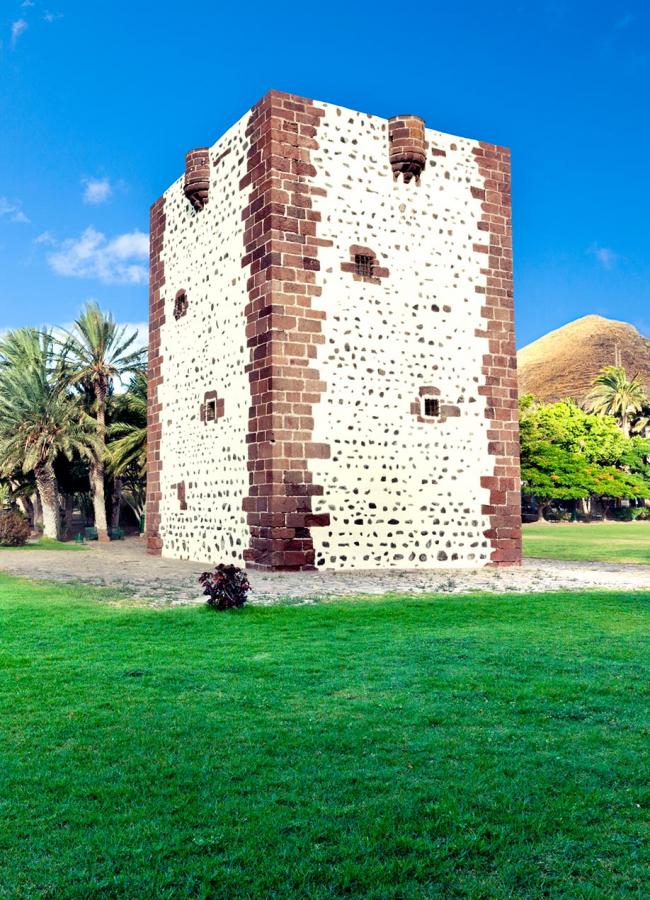

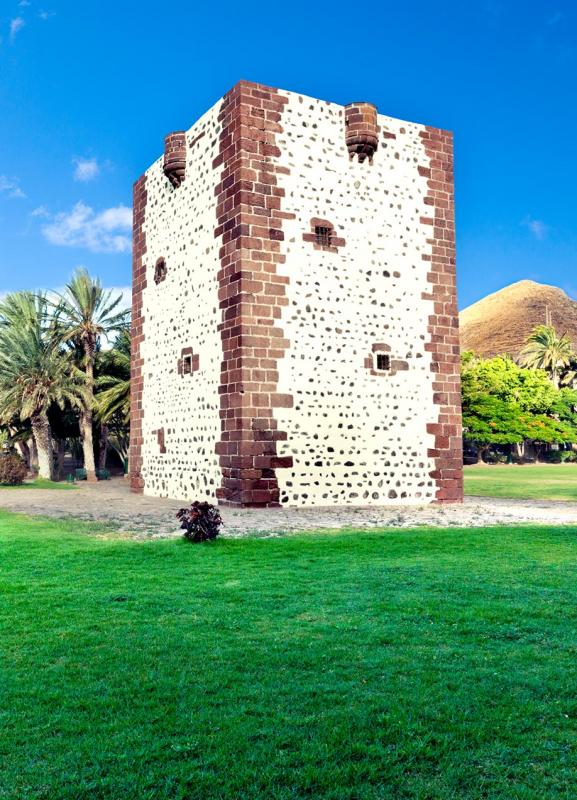
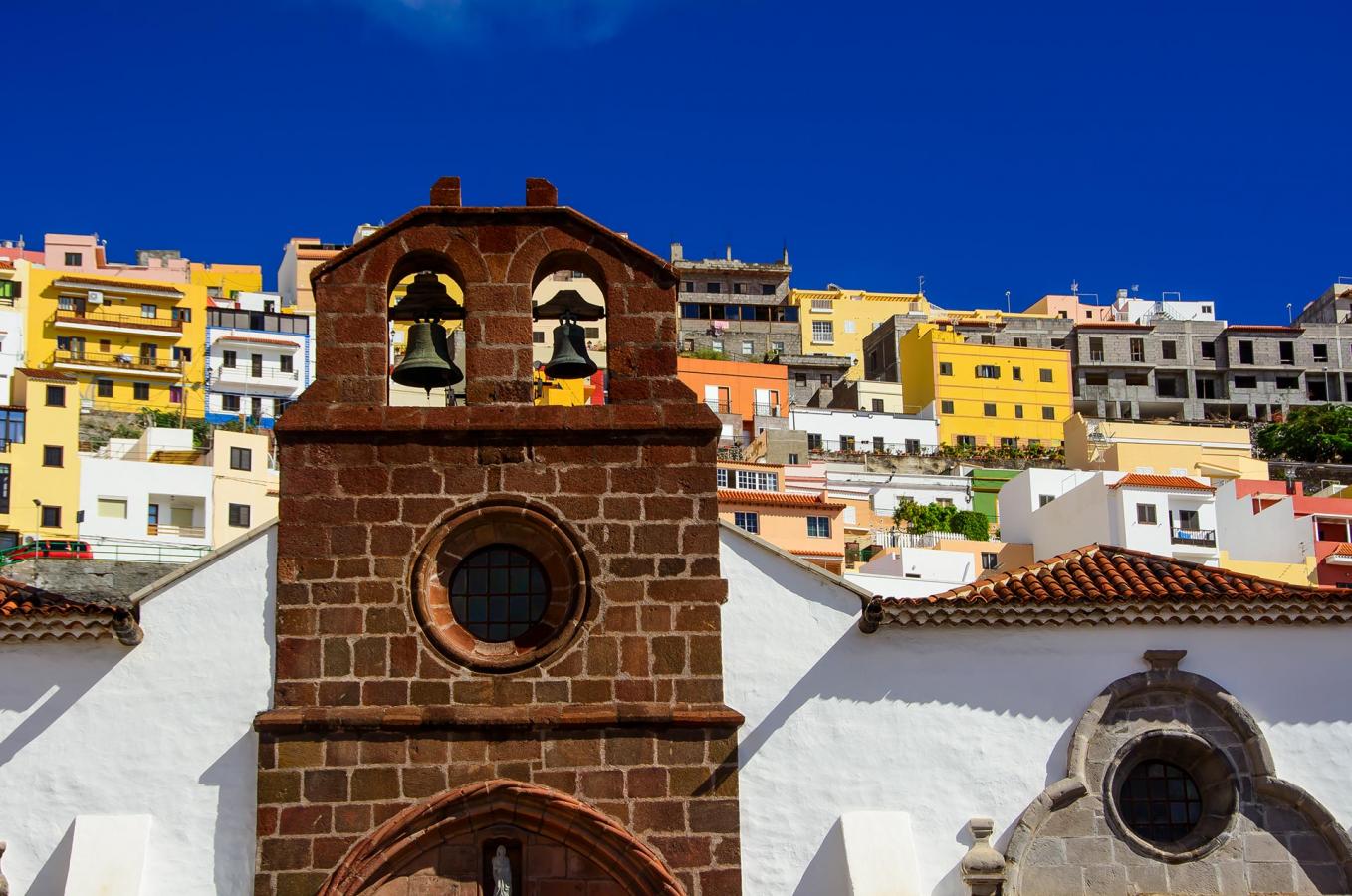

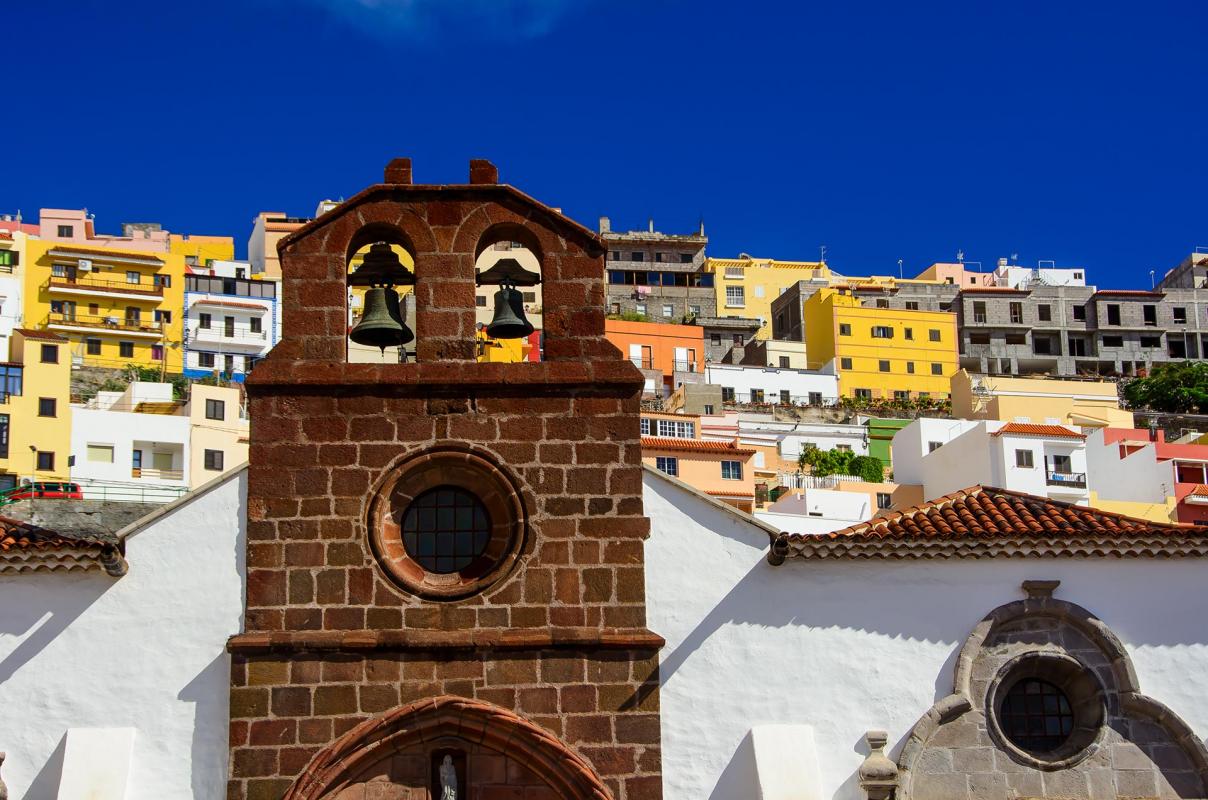
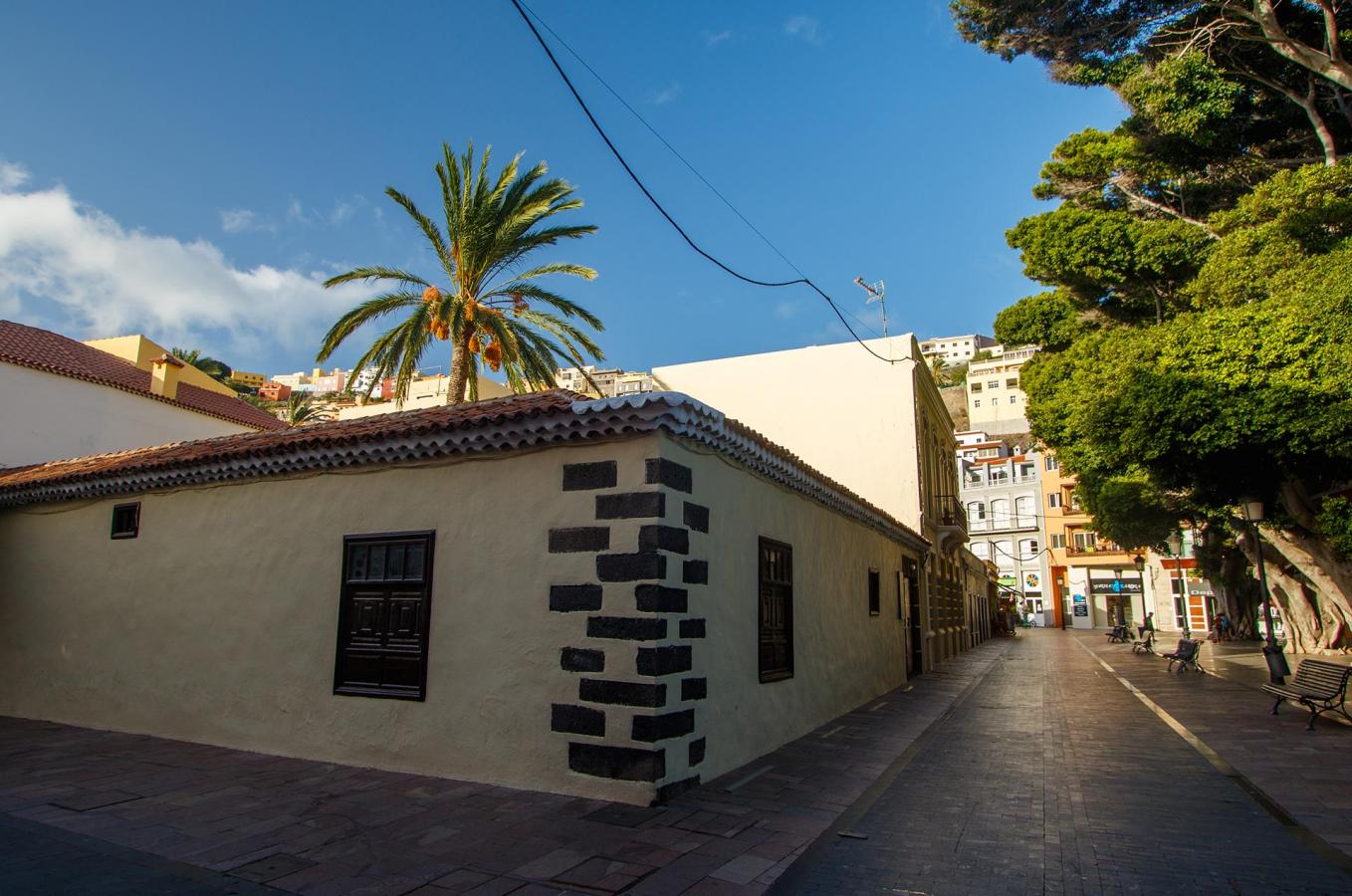

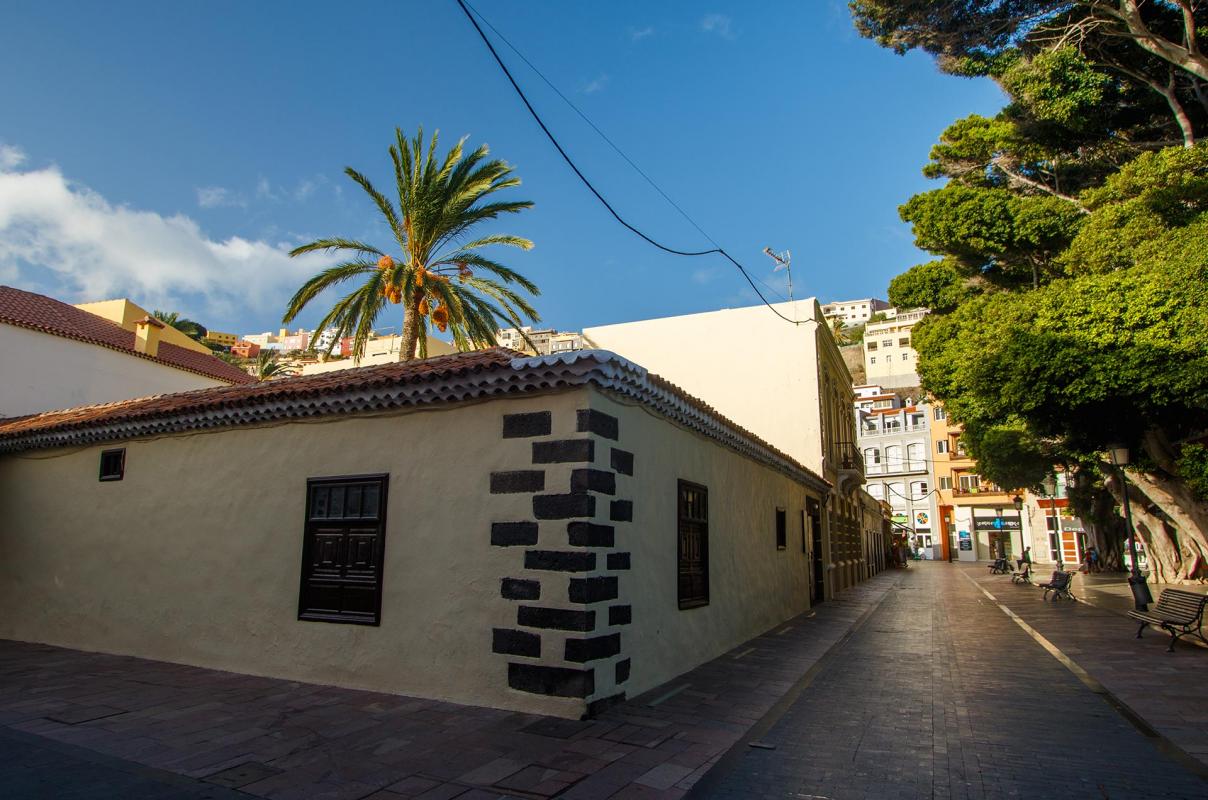
Columbus on La Gomera, a route for discovering the discoverer
Christopher Columbus is said to have been fascinated the first time he set foot on the island of La Gomera. There is even a legend that the great love story of his life took place in San Sebastián, the island’s capital city, with the Lady of the island, Beatriz de Boadilla.
A tour around Columbus’s La Gomera could not start anywhere but the Torre del Conde, where the islanders used to say that the lovers would meet in secret. It is now one of the most visited monuments on the island and houses an interesting exhibition of maps.
A few metres away from it is the Casa de la Aguada, the island lords’ first home. It is said that Columbus took water from its well for his first voyage and that, nearby, in the ‘Nuestra Señora de la Asunción’ church, the matron church of the island, he went to pray for the expedition to be a success.



